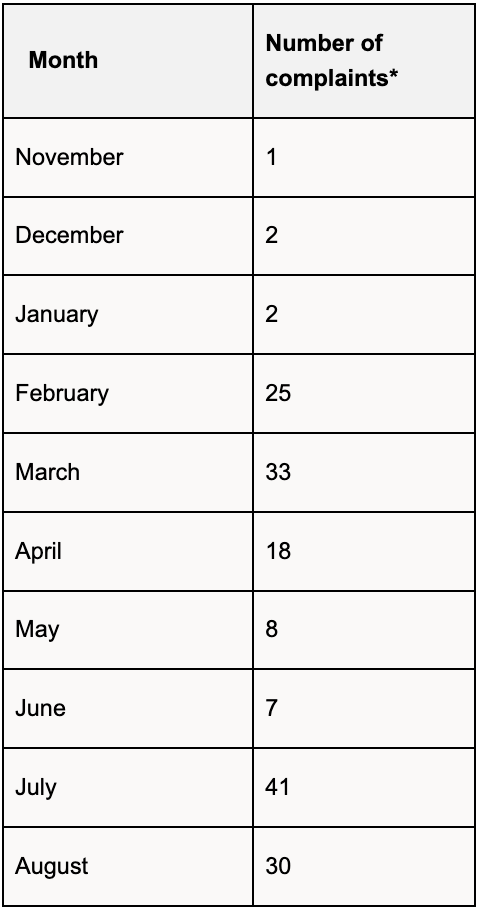CFIA Flags Grocers Over “Product of Canada” Labelling Amid Trade Dispute
- Meera Gill

- Sep 12
- 3 min read
Updated: Oct 21

The Canadian Food Inspection Agency (CFIA) has confirmed that major grocery chains misused “Product of Canada” labelling on imported food items during the recent U.S.-Canada trade dispute.
Between November 2024 and September 2025, the agency investigated 167 complaints about false or misleading country-of-origin claims, finding dozens of cases where imported goods were incorrectly marketed as Canadian.
Rise in Complaints About “Product of Canada” Labelling
Over the past year, complaints about country-of-origin claims in Canadian grocery stores climbed sharply.
The Canadian Food Inspection Agency logged 167 cases between November 2024 and September 2025, most of them during the months when tariffs on U.S. goods were in effect.
By early September, inspectors had reviewed 137 of the complaints. Nearly half of those investigations confirmed that imported items had been mislabelled as Canadian.

FIA Investigation: Dozens of Cases Confirmed
The Canadian Food Inspection Agency said 45 grocery stores were linked to the confirmed cases of mislabelling.
Forty-two of the stores were flagged once, while three received two complaints each. In every instance, investigators determined the stores had incorrectly labelled imported food as Canadian. The agency did not disclose which companies were involved.
Although the CFIA has authority to fine grocers up to $15,000 per offence, no financial penalties were issued. Instead, the agency required corrective action in every case of non-compliance.
Measures included reviewing retail labelling processes, issuing reminder letters about regulatory requirements, raising staff awareness about the importance of accurate labelling, and following up to confirm changes had been made.
Why Tariffs Fueled the Labelling Controversy
The rise in mislabelling complaints coincided with Canada’s trade dispute with the United States.
During the tariff period, tens of thousands of Canadians signed petitions urging grocery chains to promote domestic products.
Major retailers, including Loblaw, Sobeys and Metro, responded by pledging to highlight Canadian goods with maple leaf symbols and “Made in Canada” tags.
At the same time, shoppers began reporting instances of imported items displayed under Canadian labels, raising doubts about the accuracy of the promotions.
The CFIA’s findings confirmed that some of those complaints were valid, adding scrutiny to retailers already under pressure over food prices and supply chain costs.
What the Rules Say: Product of Canada vs. Made in Canada
Under CFIA guidelines, the terms “Product of Canada” and “Made in Canada” have specific meanings.
“Product of Canada” can only be used when virtually all major ingredients, processing, and labour originate in Canada. “Made in Canada,” by contrast, may appear on items containing imported ingredients if the last substantial transformation occurred domestically.
Consumer advocates have long argued that the rules can be confusing, especially when promotions or store labels feature maple leaf symbols without context.
Loblaw Companies president and chief executive Per Bank welcomed the removal of tariffs in a recent statement, saying prices would “come down over time, as we sell through inventory that was purchased based on tariffed pricing.”
The CFIA said all implicated stores corrected their practices. Still, the episode highlighted how sensitive origin claims have become for Canadians trying to track where their food comes from.
Final Thoughts
Canada lifted its retaliatory tariffs on American goods on September 1, ending nearly a year of heightened trade tensions. For the CFIA, the mislabelling cases underscored the importance of clear standards on country-of-origin claims.
While no fines were issued, the agency said corrective actions were taken in every case of non-compliance.
For consumers, the investigation reinforced the need to look closely at labels, as debates over what qualifies as a “Product of Canada” remain central to how food is marketed in grocery stores.



Comments